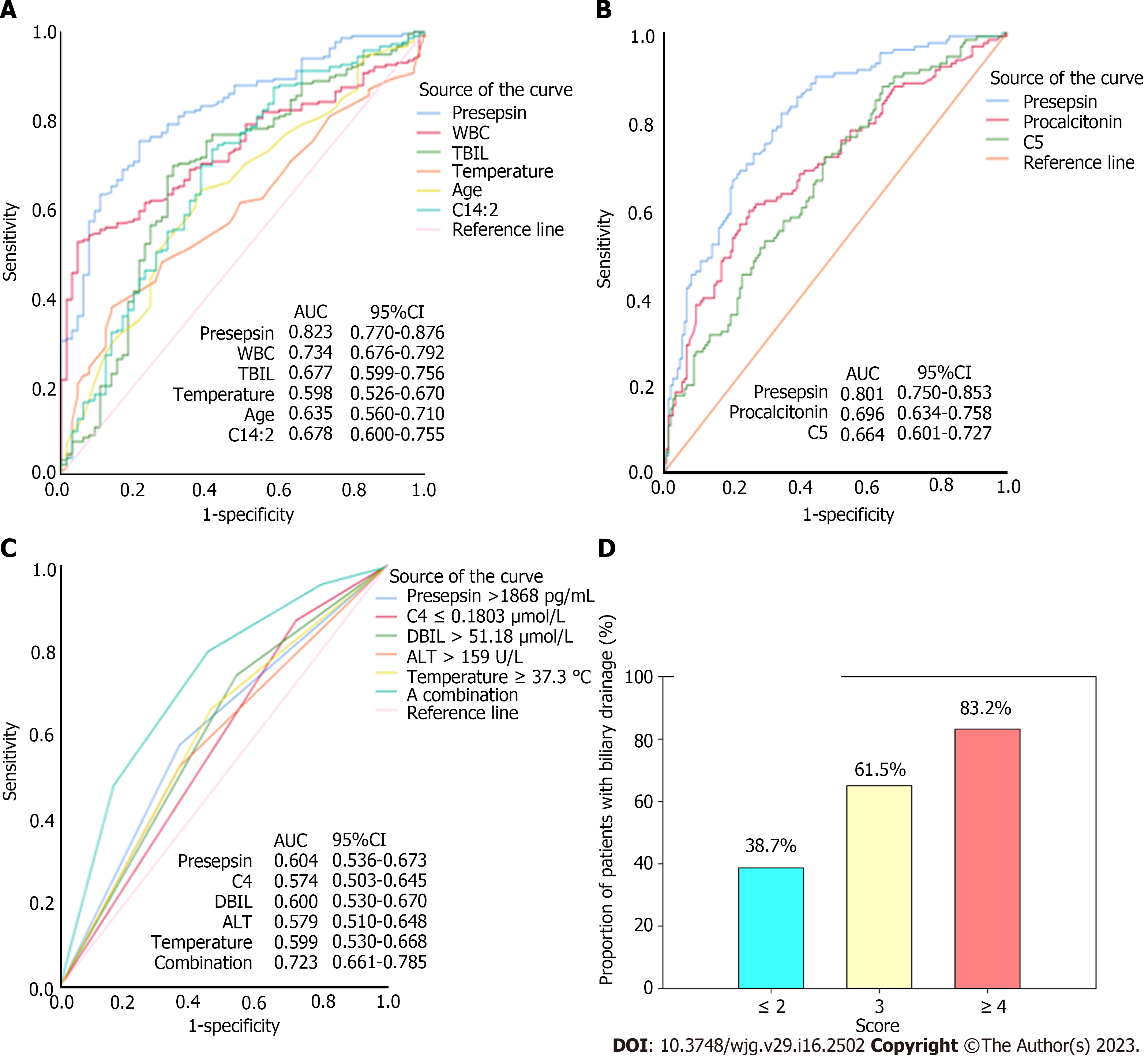Copyright
©The Author(s) 2023.
World J Gastroenterol. Apr 28, 2023; 29(16): 2502-2514
Published online Apr 28, 2023. doi: 10.3748/wjg.v29.i16.2502
Published online Apr 28, 2023. doi: 10.3748/wjg.v29.i16.2502
Figure 1 Receiver operating characteristic curves for biomarkers and clinical parameters for predicting the severity of acute cholangitis and the need for biliary drainage.
A: Mild vs moderate/severe acute cholangitis; B: Mild/moderate vs severe acute cholangitis; C: No biliary drainage vs biliary drainage in acute cholangitis; D: Correlation between the score of biliary drainage prediction model and the proportion of patients with biliary drainage. WBC: White blood cell; TBIL: Total bilirubin; C14:2: Tetradecadienyl-L-carnitine; C5: Valeryl-L-carnitine; C4: Butyryl-L-carnitine; ALT: Alanine aminotransferase.
Figure 2 Association of presepsin and acylcarnitines with 28-d survival in acute cholangitis.
A-C: 28-d survival showed significant correlation with presepsin (A), acetyl-L-carnitin (C2; B), and hydroxydodecenoyl-L-carnitine (C12:1 OH; C); D: Receiver operating characteristic curves of presepsin, C2, C12:1 OH and sequential organ failure assessment score for predicting 28-d mortality in patients with acute cholangitis; E: Kaplan–Meier survival curves showed that patients with C2 Levels > 17.07 μmol/L had a lower probability of survival at 28 d (log-rank = 25.01; P < 0.001) compared to patients with lower levels in acute cholangitis. C2: Acetyl-L-carnitine; C12:1 OH: Hydroxydodecenoyl-L-carnitine; SOFA: Sequential organ failure assessment; AUC: Area under the curve.
- Citation: Zhang HY, Xiao HL, Wang GX, Lu ZQ, Xie MR, Li CS. Predictive value of presepsin and acylcarnitines for severity and biliary drainage in acute cholangitis. World J Gastroenterol 2023; 29(16): 2502-2514
- URL: https://www.wjgnet.com/1007-9327/full/v29/i16/2502.htm
- DOI: https://dx.doi.org/10.3748/wjg.v29.i16.2502










